In response to a recent comment on one of Stolen Horse International's posts on Facebook about equine ID condemning pet microchipping, please read the following. Dr. Vincent Silverman, staff veterinarian for Avid Identification Systems, provided much of this information.
Only a few papers have been written in the past thirty years that suspected microchips as the causative agent in pet tumor production.
The most famous paper told of a French bulldog that developed a tumor from a microchip implant but stated at the end of the paper that the dog was probably given a rabies vaccine in the same area.
Vaccine-induced injection site sarcomas are well documented in veterinary journals and the AVMA (America Veterinary Medical Assoc.) Unfortunately, over many years, the interscapular area of pets has been a dumping ground for vaccines and many other medications.
This is the standardized site of microchip implantation in all pets. The microchip, a geographic captive, becomes an unwilling participant in any pathology occurring in that area.
Microchips are often encompassed in masses at the implant site because it has nowhere to go.
The association does not necessarily mean causation. Over the years, Dr. Silverman has seen sarcomas, lymphomas, actinomycetomas, seed awn migration abscesses, and a host of other maladies in the interscapular space occupied by a microchip, none of which were caused by the microchip.
Much research has been done over the years to study the association of microchips with cancer and other lesions. Dr. Dennis Macy of Colorado State University Vet School found no instance of sarcoma reported to be induced by a microchip in the large population of cats and mice that he implanted.
The British Small Animal Vet Association (BSAVA) studied approximately 1 million microchipped pets and found no confirmed associated tumor formation.
Dr. Larry McGill of the American College of Vet Pathology and the AVMA Member Services committee stated that of over 2000 cats studied in 2003, there was not a single instance of sarcoma reported to be induced by a microchip.
An excellent paper by E.Murasugi et al. (Veterinary Record (2003) 153, pages 328-330) followed the tissue change reactions to microchips for six years and found them to be much different than the tissue changes seen in sarcoma.
Chip migration in pets can occur, but it is usually the result of improper implantation technique. If the chip is placed in the interscapular area (between the shoulder blades) on the dorsal midline of pets, it will likely never move.
When a chip is placed lateral to one of the shoulder blades, it can travel subQ under the influence of gravity for a very short distance. It cannot ever enter a joint.
For horses, the chip is placed in the nuchal ligament on the left side of the neck. The chip would never migrate out of that very tough tissue. The nuchal ligament is the standard site for chip placement in the horse. It would be challenging for a chip to migrate once it is in the solid ligament. There is no dead space or room to roam.
If a horse microchip should migrate, it would be due to improper implantation technique. Sometimes, the people we trust for this procedure insert it into the wrong location or under the skin instead of the nuchal ligament.
The WSAVA (World Small Animal Veterinary Assoc.) and every major veterinary group worldwide endorse the microchipping of pets as a safe and efficient way of returning a lost pet to the owners.
In short, a pet or horse is likely never to return home if it is not microchipped.
On a more practical note, historically, there have been many millions of pets microchipped worldwide over the last thirty years. One would think that a pattern of tumorigenesis would have been established long ago.
Scanners
In response to the criticisms that some microchip scanners can't read all microchips, there is some truth in that statement because not all scanners are created equal. However, there is an explanation for why this happens.
Stolen Horse International has had access to multiple scanners over the years, with some sitting in our office. If the person scanning a horse or other animal uses a universal scanner that can read Avid/Fecava and ISO frequencies like the one we use, the Avid Mini Tracker III, it works.
Some ISO-read-only readers out there will not read any frequency other than ISO. These are special application readers, many of which are cheap and easily obtained on multiple websites.
These unique readers are used for specific purposes, such as reading your ISO microchips in your animals.
If you read more than your horses with the ISO microchip, you should have a universal scanner that reads all frequencies.
Many horses and pets have the old 125 kHz US standard frequency in the USA. The ISO readers will not read that frequency for any microchip. Only the old, outdated, and current universal scanners will read that chip.
RESOURCE: Vincent Silverman, DVM, MS, Avid Identification Systems, Inc.
Stolen Horse International provides news and other resources for free on this website. As a charitable organization we survive on the kindness of people like you. Please consider donating to help fund the organization or purchasing a NetPosse ID for your horse, dog or cat to help protect your beloved animals!
Debi Metcalfe



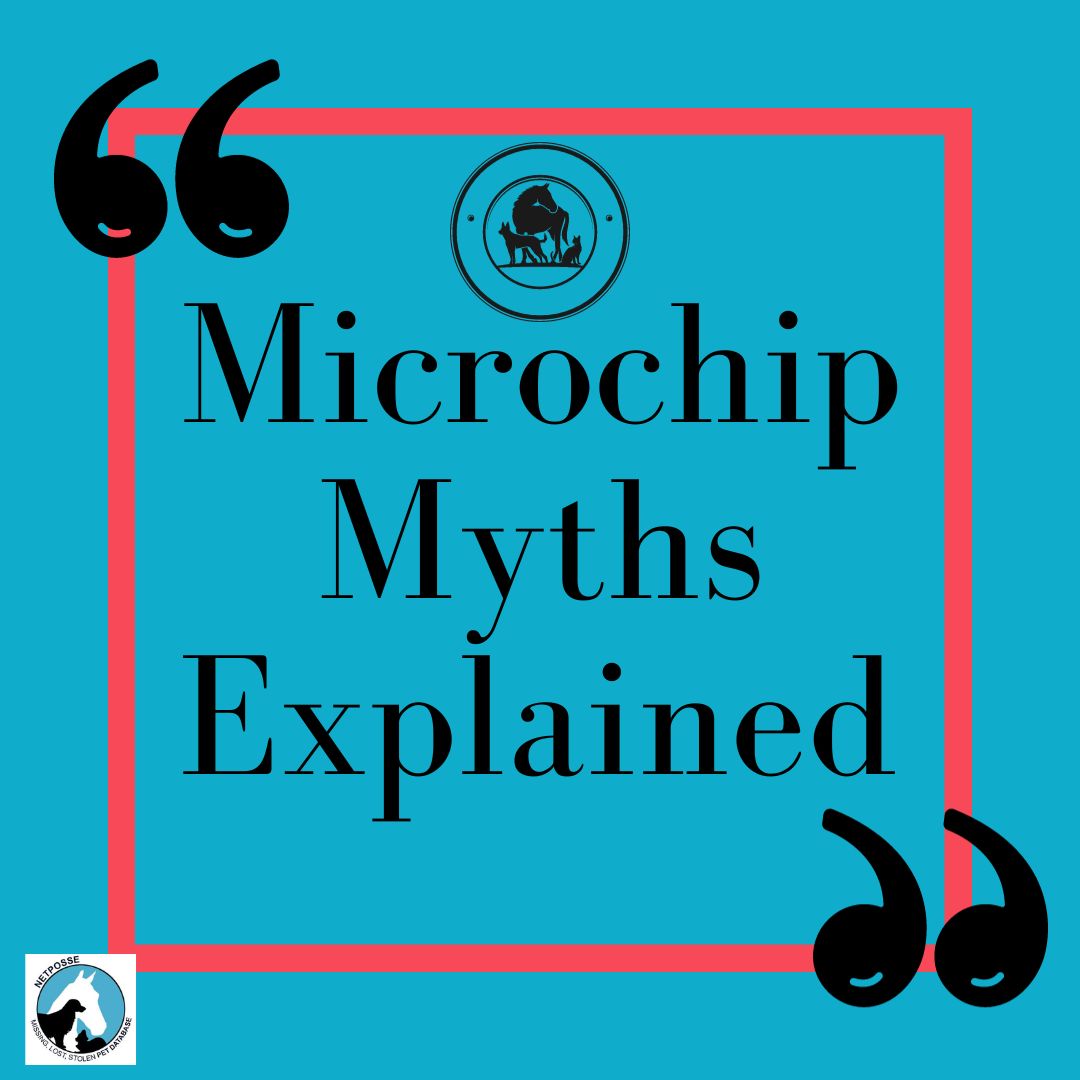
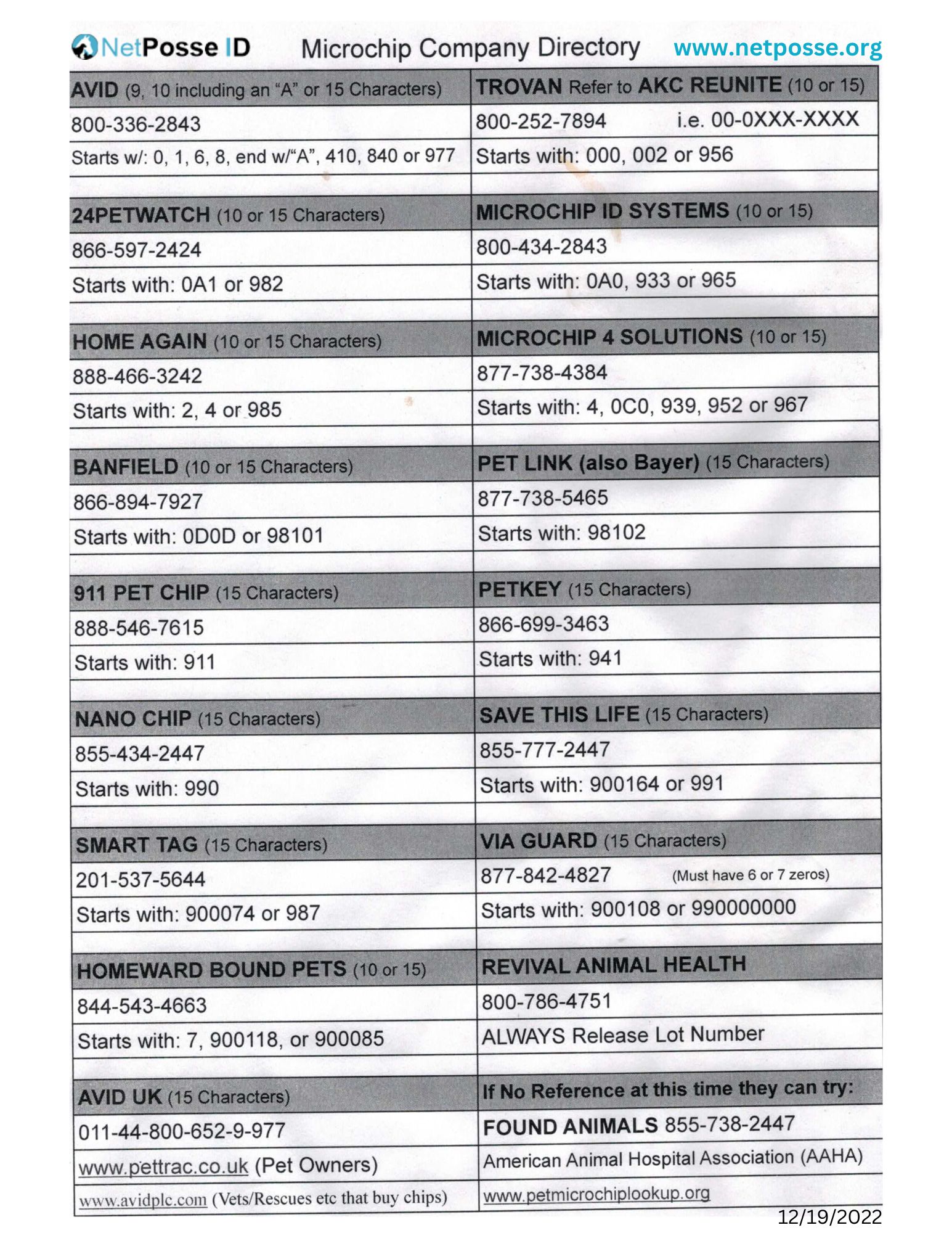
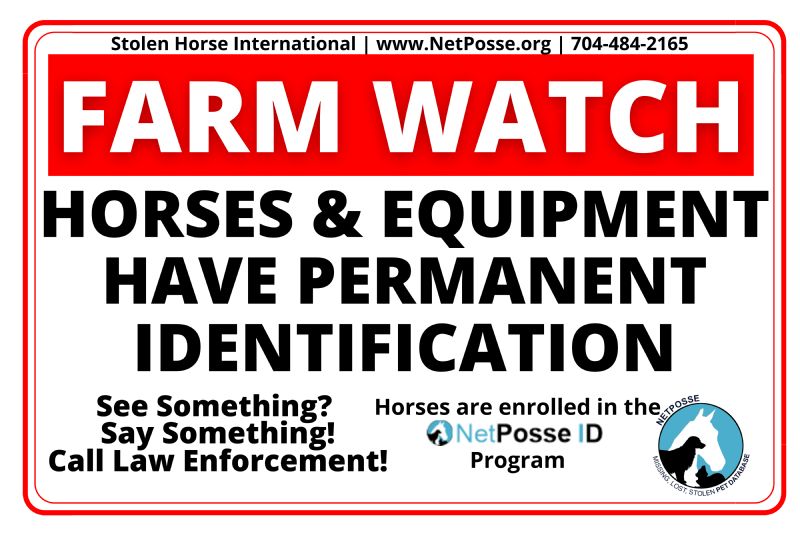


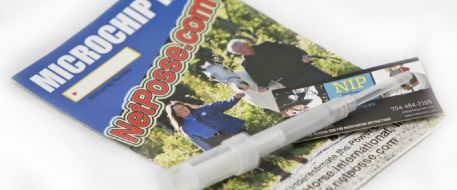
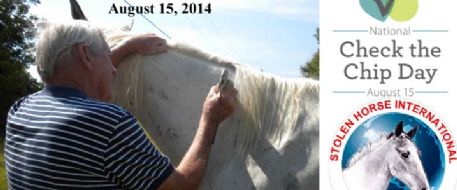
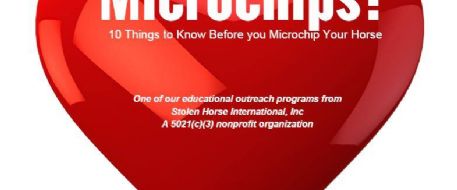







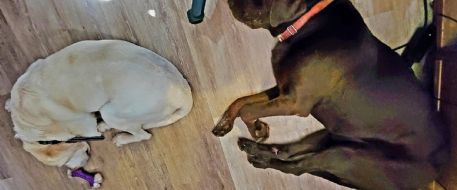



Comments